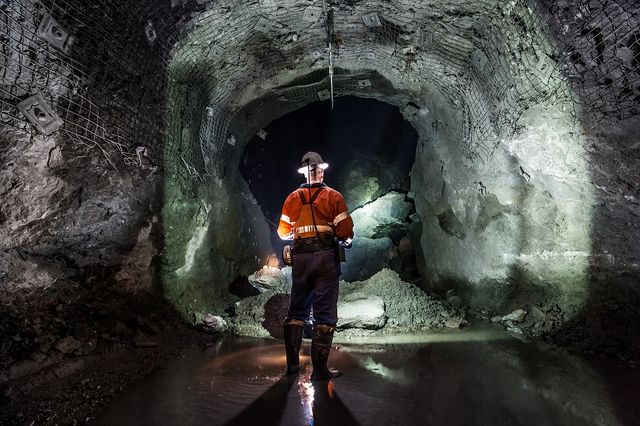
Take a look at the incredible technology that’s coming to the mining industry in the near future — and changing the way you do your job forever.
Like many industries, mining is being disrupted by technology. It’s changing the way we do things and creating incredible innovations, opportunities and efficiencies.
With this tech revolution really only just beginning, now is perhaps a more exciting time than ever to work in, or join, the mining industry. If you’re planning to spend the next decade or two of your career in mining, there’s plenty to look forward to.
Here’s a glimpse of some of the tech that’s on its way — and that you might find yourself coming to grips with on a daily basis before too long.
Drones and underground mapping
The ways data can be collected, processed, stored and presented are improving at breakneck speed. We’re heading far beyond the “digital twin” territory of online simulation of sites and deposits — much of which still relied on some very analog methodology. Mining exploration is moving into an exciting new era, with drones and interferometric sensors.
One company, called Exyn Technologies, has developed autonomous aerial robots which don’t require any GPS or infrastructure, making them perfect for 3D mapping underground mines. The company hopes their drones will make mining both much more efficient and safer for miners.
Mining from tailings
Mining companies are always on the lookout for ways to improve their environmental footprint and researchers in the US might just have found the perfect way to deal with one of mining’s more difficult legacies — tailings.
West Virginia University has discovered a way to mine tailings for rare-earth minerals. These minerals, like lithium, are used in modern technology, like smartphones, and are often present in acidic mine tailings of many mining operations. With money to be made, it’s possible extracting rare-earth minerals from tailings waste could become a standard part of every mining operation.
READ MORE: What sets the mining industry’s future superstars apart?
Intelligent, interactive safety gear
It’s no secret mining can be a dangerous industry. It’s why mine sites have long inductions and endless PPE and always tout their safety records on big signs. It’s very important stuff but it’s all still a little bit analog.
Well, it was. Not anymore. A company called SmartCap has invented a PPR helmet with sensors that continually monitor mine workers for signs of fatigue, distraction and alertness — among other things. It might sound a bit Big Brother but it’s absolutely the kind of tech that could save your life.
From maintenance guy to maintenance AI
When equipment fails on site, it can cost a mining company a fortune in lost processing, staff downtime, replacement parts, and so on. Correctly identifying and quickly fixing the problem is vital.
While maintenance teams work hard to keep things running smoothly, in the near future they won’t have just their skills and experience and the occasional sensor to rely on. A new kind of predictive maintenance is on its way — and it’s powered by artificial intelligence.
READ MORE: Workers excited about mining’s high-tech future, study finds
Dutch company OneWatt has invented an AI tool that listens to motors in industrial equipment and predicts any potential problems before they become problems. Given the system is non-intrusive and can be retrofitted to most existing equipment, expect to see OneWatt’s “embedded acoustic recognition sensors” (or EARS) coming to a site near you.
They’re by no means the only company working on tech in the mining and processing space, so expect to see lots of advanced analytics coming to your site soon. Fully integrated processing systems, continuous communication and product tracking are all on the way.
Centralised site automation
At some sites, centralised automation is already up and running. But it’s still early days for this technology, which is really all about the intelligent deployment of labour, equipment and minerals.
At a basic level, why fly whole teams from the city to a remote site and house them there, all at great cost, if those teams instead can log in remotely to control the ore train or the dump truck or a piece of processing equipment?
There’ll always be a need for some staff onsite, but if the job can be done remotely, and if parts of it can be fully automated, why wouldn’t a mining company jump at the opportunity?
Cleaning up contamination
Speaking of tailings, mine site remediation and rehabilitation are an important part of mine life planning. At the end of a mine’s life, mining companies have a responsibility to make the site as safe possible. That includes dealing with chemical contamination, which can be a very tricky task.
But scientists in the US have now found a way to clean up environmental contamination using microbes and their enzymes to turn nasty dioxins and chlorine-based compounds left in the soil into sustainable bio-chemicals instead. It’s a stunning discovery that will help clean up not just soil but sediments and even groundwater.
How long before governments are insisting on this level of remediation as a condition before issuing a mining licence?
Be the first to know about new job postings when you register for job alerts. We’ll send you an email when the role you want becomes available.